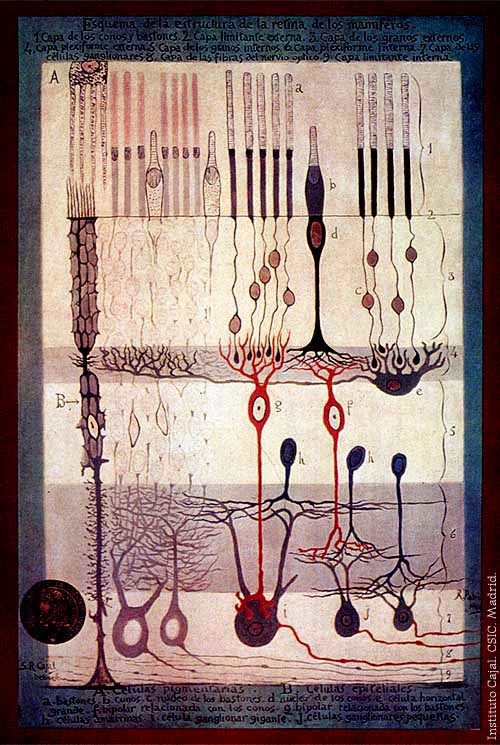According to the widely accepted commentary-key paradigm for the definition of the concept of
consciousness proposed by Lawrence Weiskrantz [1997], subjective reports are
the primary criterion for deciding whether a percept is conscious or not. The
proposal is akin to the accurate report
concept of Seth, Baars and Edelman
[2005]. The reports do not have to be verbal, in fact, many neuroimaging
experiments are based on manual reports of conscious perception [Dehaene, 2006].
In any case, the paradigm assumes attention as a key property of consciousness,
for it would not make any sense a non-attentional report. However, the proposition
“there is consciousness iff there is attention” is not subscribed by some
neuroscientist, for subjects can become conscious of an isolated object or the
gist of a scene despite the near absence of top-down attention, and,
conversely, subjects can attend to perceptually invisible objects [Koch and
Tsuchiya, 2006].
Such
domain for the concept of consciousness has been neurophysiologically
characterized by 3 postulates [Seth, Baars and Edelman, 2005]:
1. The
EEG signature of consciousness. LaBerge[2006]: Synchronous activity in clusters
of apical dendrites produces electromagnetic (EM) fields that can radiate
outward, and if they are strong enough to reach the surface of the scalp they
can be measured as EEGs. The electromagnetic field has been proposed as the
physical substrate of consciousness by McFadden [2000] and Pockett [2000]. According
to these investigators it is the overall field pattern within the brain formed
by all of these individual fields that constitutes momentary consciousness.
2. The dependence of consciousness on the
thalamocortical complex. There are different neural-based theories which have
postulated the link of consciousness to the thalamocortical circuitry, such as
Llinas y Pare [1997], Bogen [1995], Baars[2003], Tononi and Edelman[1998] etc. Furthermore
LaBerge [2005]had proposed that the stability of the cognitive processes of
consciousness (sustained attention, imagery, and working memory) are possible
due to the stabilization produced by apical dendrite activity in pyramidal
neurons within recurrent corticothalamic circuits, and that the wave activities
of apical dendrites that stabilize the ongoing activity constitute the subjective
impressions of an attended object and the entire sensory background.
3. The
widespread brain activity in consciousness. While unconsciousness is local,
consciousness is a widespread neural activity, as it is shown by several (two
dozen) neuroscientific experiments [Seth, Baars and Edelman, 2005].
References
Baars, B. J., Banks, W. P., & Newman, J. (Eds.).
(2003). Essential sources in the scientific study of consciousness. Cambridge,
MA: MIT Press.
Bogen, J. E. (1995). On the neurophysiology of consciousness. I. An overview.
Consciousness and Cognition, 4, 52–62.
Dehaene, Stanislas; Changeux, Jean-Pierre; Naccache1,
Lionel; Sackur, Jerome,
and Sergent, Claire. [2006] Conscious, preconscious, and subliminal processing: a testable taxonomy.
TRENDS in Cognitive Sciences Vol.10 No.5 May 2006.
Koch, Kristog, and Tsuchiya, Naotsugu. [2006] Attention and consciousness: two distinct
brain processes. TRENDS in Cognitive Sciences Vol.11 No.1
Laberge, David.[2005] Sustained attention and apical dendrite activity in recurrent circuits.
Brain Research Reviews 50 (2005) 86 – 99.
Laberge, David.[2006] Apical dendrite activity in cognition and consciousness.
Consciousness and Cognition 15 (2006) 235–257.
Llinas, R. R., & Pare, D. [1997]. Coherent oscillations in specific and
non-specific thalamocortical networks and their role in cognition. In M.
Steriade, E. G. Jones, & McCormick D.A. (Eds.). Thalamus (experimental and
clinical aspects) (Vol. 2, pp. 501–516). Amsterdam: Elsevier.
McFadden, J. [2000]. Quantum evolution. London: Harper–Collins.
Pockett, S. [2000]. The nature of consciousness: A hypothesis. Lincoln, NE: Writers
Club Press.
Seth, Anil K.; Baars,
Bernard, J. and Edelman, David B. [2005]. Criteria for consciousness in humans and other mammals. Consciousness
and Cognition 14 (2005) 119–139.
Tonomi, G., & Edelman, G. M. (1998). Consciousness
and complexity. Science, 282, 1846–1851.
Weiskrantz, L. [1997] Consciousness Lost and Found: A Neuropsychological Exploration,
Oxford University Press.
